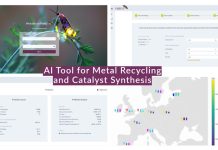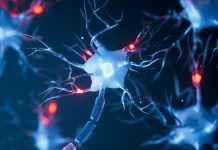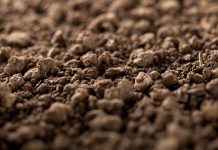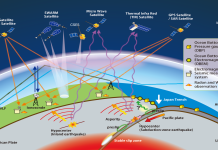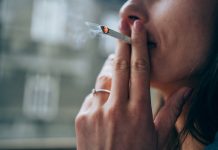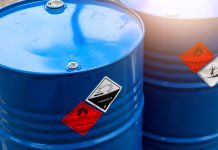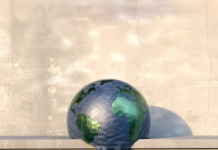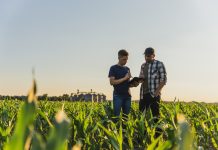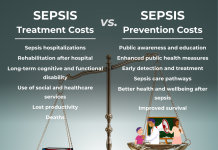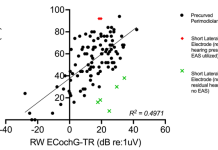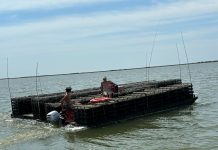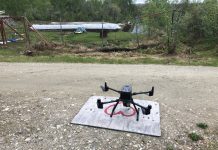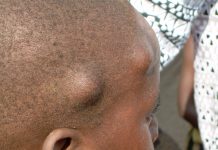Open Access Government produces compelling and informative news, publications, eBooks, and academic research articles for the public and private sector looking at health, diseases & conditions, workplace, research & innovation, digital transformation, government policy, environment, agriculture, energy, transport and more.
Home 2025
Archives
How can carbon capture surfaces help the planet?
Beth McDaniel, JD, President of Reactive Surfaces highlights the potential of Carbon Capture Surfaces (CCS), an innovative and affordable of method using algae for CO2 removal, addressing the urgent need for scalable solutions to combat climate change.
Electrified (electro)catalyst production and recycling for sustainable catalyst-based chemical industries
Savitha Thayumanasundaram, Research and Development Scientist at the Flemish Institute for Technological Research (VITO) & Project Coordinator of the FIREFLY consortium, explains electrified (electro)catalyst production and recycling for sustainable catalyst-based chemical industries.
Unlocking the brain: Pioneering psychiatric genomics at the University of Arizona
Psychiatric disorders challenge us deeply. At the University of Arizona, researchers dissect their molecular roots, focusing on genomics. They aim to decode miRNA’s role in conditions like depression, using advanced analysis to forge a path towards personalized mental health care. Find out more in this exclusive Q&A.
Philosophy: Environmental risk and international law
John Martin Gillroy is a Professor of Philosophy, Law, and Public Policy at Lehigh University. Here, he shares his expertise in philosophy, particularly in environmental risk and international public law.
Soil biological amendments for soil health
Lynette Abbott and Bede Mickan from The University of Western Australia, provide insights into research on enhancing soil health using biological amendments.
10th Anniversary of the 2015 M7.8 Nepal earthquake: Explore new prediction technologies
Dr. Dimitar Ouzounov from the Institute for Earth, Computing, Human, and Observing (Institute for ECHO) at Chapman University and Dr. Angelo De Santis from the National Institute of Geophysics and Volcanology (Rome, Italy) are exploring new technologies for short-term earthquake forecasting and prediction, including the application of the LAIC approach to the 2015 Gorkha earthquakes in Nepal.
Does moving away from the climate disaster signal a departure from the hydrogen economy?
According to Adélio Mendes, a Full Professor at the Faculty of Engineering of the University of Porto (FEUP), moving away from the climate disaster does indeed signal a departure from the hydrogen economy, presenting a third pathway to consider.
Estimating the impact of cigarette smoking on life expectancy from 1950 to 2000
In this study, Theodore R. Holford from the Department of Biostatistics at the Yale University School of Public Health estimates the impact of cigarette smoking on life expectancy between 1950 and 2000.
The challenge of determining the health risks of low-dose chemical exposures
Rebecca J. Wilson and Pamela J. Lein, explore whether the dose makes the poison or not. Here, they discuss the challenges of determining health risks associated with low-dose chemical exposures.
The tenth anniversary of the Paris Agreement: COP30, failure, and renewal
The Conference of the Parties in Belém, Brazil, this November (COP30) will celebrate the tenth anniversary of the Paris Agreement (COP21 in 2015), but where, Richard Beardsworth asks, do things stand ten years on?
Are we on the verge of a fourth agricultural revolution?
In this insightful analysis, Professor Guillaume Blanchet from Université de Sherbrooke examines whether we are on the verge of a fourth agricultural revolution and explores new technologies for agroecology.
Paternity leave: Overcoming barriers to uptake
Deborah Da Costa, PhD, Associate Professor in the Department of Medicine at McGill University and Scientist at McGill University Health Centre, discusses the benefits and barriers to fathers’ uptake of paternity leave following the birth of a child.
Lives and money: Understanding the true cost of sepsis in Canada
Kali Barrett, Victoria Chechulina, and Fatima Sheikh discuss the economic burden of sepsis in Canada and the economic rationale for implementing coordinated, national strategies to combat this often-overlooked disease.
Optimizing outcomes: The role of surgical technique and intraoperative factors in cochlear implant performance
Variability in cochlear implant performance remains a significant challenge for clinicians and patients. Contributors from Washington University School of Medicine investigate how surgical techniques and intraoperative adjustments can be refined to further optimize cochlear implant outcomes.
A new wave in oyster farming: Making oysters cheaper than chicken
After a 37-year career as Lead Seafood Microbiologist at the USFDA, Dr Angelo DePaola decided to tackle a different challenge: oyster farming.
Sustainable textile production: Policies and certifications transforming the global landscape
Victor Durand, the Head of Operations at Ever Dye, discusses how the company meets the new standards for sustainable textile production.
Catalyzing mineral weathering for permanent, safe and cost-effective carbon storage
Martin Van Den Berghe, CEO of Cytochrome, discusses catalyzing mineral weathering for permanent, safe, and cost-effective carbon storage.
Onboard Carbon Capture (OCC): The Everlong project
The maritime industry must decarbonise. Onboard Carbon Capture (OCC) offers a promising solution for mitigating emissions from existing and new build vessels. Here, the EverLoNG project demonstrates the feasibility of OCC, exploring its technical, logistical, environmental and regulatory aspects, paving the way for wider adoption.
Measuring permafrost thaw subsidence in agricultural fields in Alaska
Melissa Ward Jones, a Research Assistant Professor at the Water and Environmental Research Center (WERC) of the University of Alaska Fairbanks, discusses research focused on understanding the interactions of permafrost thaw and agriculture.
Novel treatments offer hope for neglected tropical diseases
This interview with Professors Achim Hoerauf and Marc Hübner explores their groundbreaking work, focusing on the development of novel drugs and the importance of collaborative partnerships in tackling these devastating diseases.


